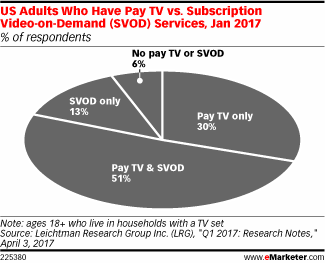New entrant in a quickly growing space
A year after announcing plans to expand its business to offer live TV, Hulu unveiled a new live TV streaming beta service.
The $39.99 a month service will feature live programming, as well as on-demand programming, from broadcast and cable brands, including live sports, news and events. Currently, networks like NBC Universal, Turner and Scripps are available at launch.
Listen In: eMarketer’s Paul Verna and Rimma Kats discuss the Hulu launch in the new episode of the “Behind the Numbers” podcast.
The monthly fee includes 50 hours of recording storage, up to six individual profiles and two simultaneous streams per account, with options to upgrade to an enhanced Cloud DVR and unlimited in-home screens. Currently, the service is available on Apple TV, Xbox One, Chromecast, as well as iOS and Android devices.
While live streaming TV services are relatively new, there is already a crowded field of competitors, including YouTube, SlingTV, DirecTV and now Hulu.
Hulu could have an advantage based on its heritage. It’s owned by a consortium of broadcasters who clearly have a stake in winning the live streaming space.
The live streaming feature distinguishes Hulu from some of its main competitors, like Netflix and Amazon Prime Video, who solely offer on-demand video content.
Amazon is dabbling with live streaming, but in a different way. It recently bought the rights to NFL’s streaming packaging, paying roughly $50 million for 10 games it will stream next fall.
Netflix so far is staying clear of the live space, whether that be sports or linear TV programming. In a recent letter to its investors, it said its main focus is on-demand, commercial free viewing rather than live, ad-supported programming.
eMarketer’s video analyst, Paul Verna, said that the original content offered by each platform will be a key for differentiation. “Whether it’s a linear OTT or an on-demand service,” he said, the consumer’s decision of which platform to choose “is going to come down to original content.”
by Rimma Kats


